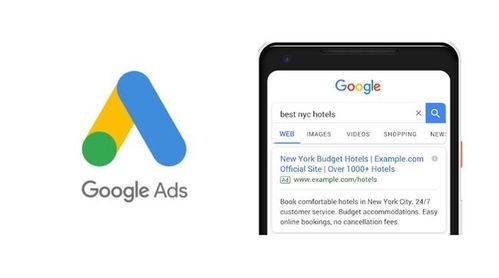Are you looking to expand your business reach and attract more customers online? Google Ads, a powerful advertising platform by Google, can help you achieve just that. In this detailed guide, we’ll explore the ins and outs of Google Ads, helping you understand how to leverage its features to maximize your advertising efforts.
Understanding Google Ads

Google Ads is an online advertising platform that allows businesses to create and manage their ads across various Google products, including Google Search, YouTube, Gmail, and the Google Display Network. By using Google Ads, you can reach a vast audience and promote your products or services effectively.
Types of Google Ads

Google Ads offers a variety of ad formats to suit different business needs. Here are some of the most popular types:
| Ad Type | Description |
|---|---|
| Search Ads | Text-based ads that appear on Google Search results pages when users search for relevant keywords. |
| Display Ads | Visual ads that appear on websites and apps within the Google Display Network, reaching a broader audience. |
| Video Ads | Video ads that can be shown on YouTube and other Google-owned properties. |
| Shopping Ads | Product-based ads that allow you to showcase your products directly in search results. |
| App Ads | Ads designed to promote your mobile app, helping you reach users who are interested in your app. |
Setting Up Your Google Ads Account

Before you can start running ads on Google Ads, you’ll need to create an account. Here’s a step-by-step guide to help you get started:
- Visit the Google Ads website (https://ads.google.com) and click on “Start now.”
- Sign in with your Google account or create a new one.
- Choose your business type and industry.
- Set up your payment method and billing information.
- Enter your business information, including your website URL and contact details.
- Review and confirm your account settings.
Creating Your First Campaign
Once your account is set up, it’s time to create your first campaign. Here’s what you need to do:
- Select the campaign type that best suits your business goals (e.g., search, display, video, etc.).
- Choose your target audience by setting location, language, and other demographics.
- Set your budget and bidding strategy. You can choose to bid on a cost-per-click (CPC) or cost-per-impression (CPM) basis.
- Choose your keywords or create a keyword list to target relevant search queries.
- Design your ad creatives, including headlines, descriptions, and images or videos.
- Review and submit your campaign for approval.
Optimizing Your Google Ads Campaign
Once your campaign is live, it’s essential to monitor its performance and make adjustments as needed. Here are some tips for optimizing your Google Ads campaign:
- Analyze your campaign’s performance regularly to identify areas for improvement.
- Use Google Ads’ built-in tools to track conversions and measure the success of your campaign.
- Adjust your keywords, ad creatives, and bidding strategy based on performance data.
- Experiment with different ad formats and targeting options to find what works best for your business.
- Stay up-to-date with Google Ads’ best practices and industry trends to ensure your campaigns remain effective.
Conclusion
Google Ads is a powerful tool that can help you reach a wider audience and grow your business. By understanding the platform’s features and best practices, you can create effective campaigns that drive results. Whether you’re a small business owner or a marketing professional, Google Ads can help you achieve your advertising goals.
